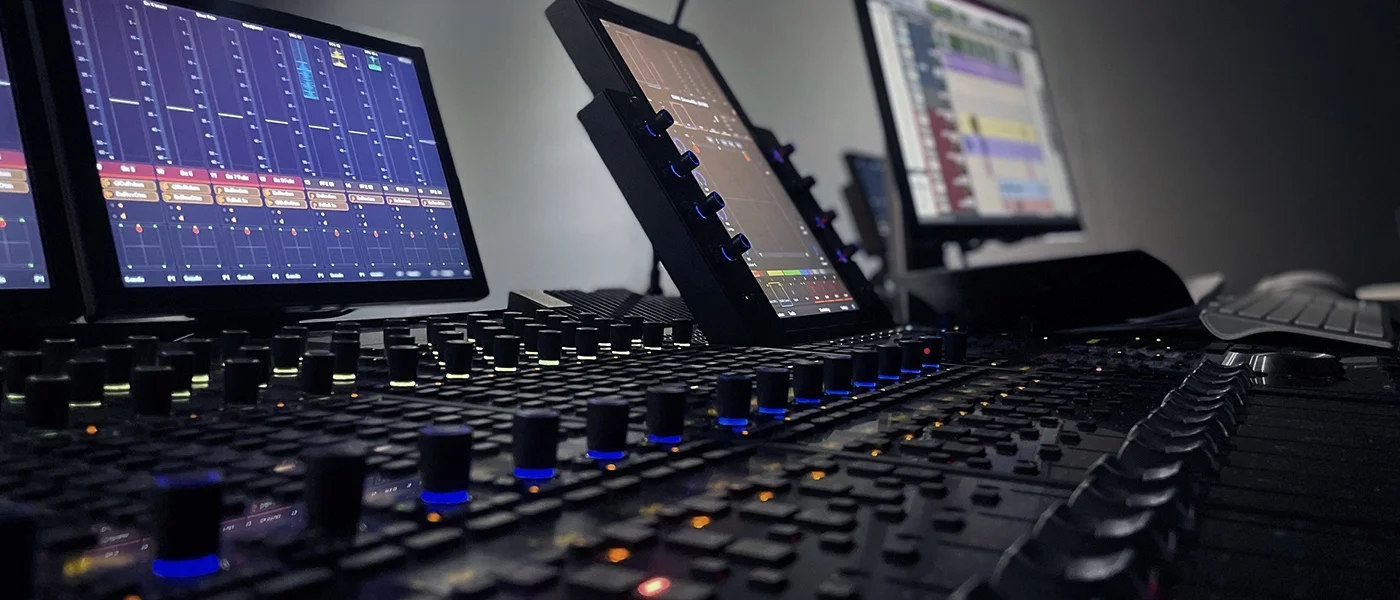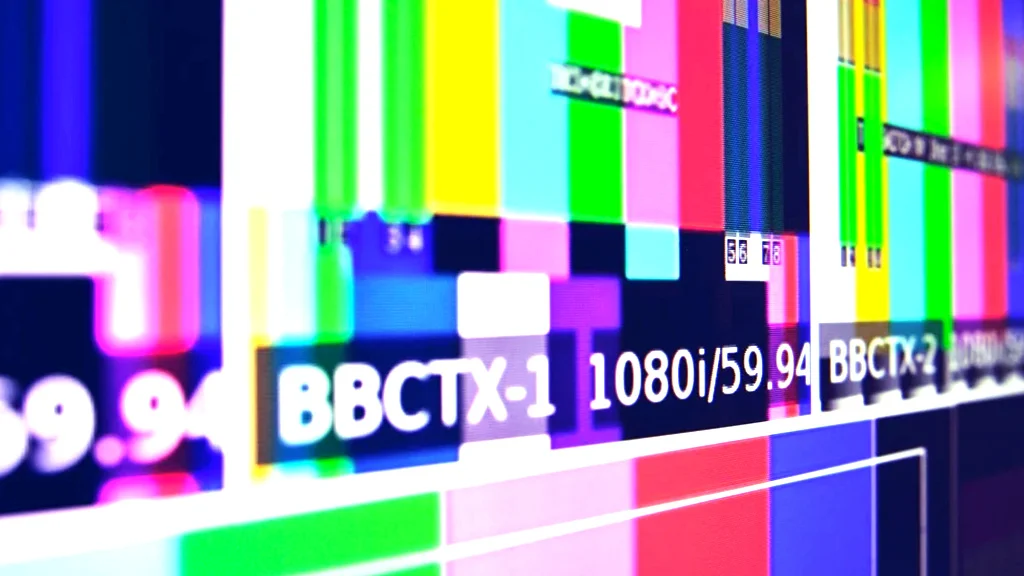
- Academy
Importance of Frame Sync in Broadcast Media
In the world of broadcast media, maintaining precise frame synchronization is crucial for delivering a seamless and high-quality viewing experience to the audience. Broadcast systems typically involve the integration of multiple video and audio sources, each with its own timing and format requirements. Ensuring that these disparate elements are perfectly synchronized is essential for producing professional-grade content.
Frame Sync definition
Frame synchronization is the process of aligning the timing of various video and audio signals to a common reference. This alignment ensures that all components, such as cameras, graphics, and audio feeds, are precisely synchronized, preventing visual artifacts, audio video syncissues, and other disruptions in the final program.
Serial Digital Interface (SDI) is a widely adopted video interface standard in the broadcast industry. SDI signals inherently carry timing and synchronization information, which allows connected devices to maintain frame-accurate synchronization when using SDI cables.
SDI frame sync is a critical component in broadcast workflows, as it ensures that all video and audio signals are aligned to a common reference. SDI switchers, routers, and other professional broadcast equipment incorporate SDI synchronization signals capabilities, enabling the integration of various sources without the need for external synchronization devices.
Audio embedder functionality can also be integrated within these workflows to embed audio signals directly into the SDI video stream, ensuring that both audio and video remain synchronized throughout the production process.
By leveraging SDI frame sync, broadcast professionals can seamlessly switch between camera feeds, seamlessly incorporate graphics and effects, and maintain precise timing throughout the entire production and transmission process. This level of synchronization is essential for delivering a polished and professional-grade broadcast experience.
Role of frame sync in broadcast media
Frame synchronization, or frame sync, is a crucial aspect in the field of broadcast media. It plays a vital role in ensuring the seamless integration and transmission of video and audio signals across various media platforms. Here are some key reasons why frame sync is important in broadcast media:
Synchronization of Video and Audio:
- Audio video synchronization ensures that the video and audio signals are perfectly aligned and synchronized, preventing any lip-sync issues or audio-video desynchronization.
- Audio video synchronization is essential for providing a high-quality and immersive viewing experience for the audience.
Signal Integration and Switching:
- Video frame sync allows for the seamless integration of multiple video sources, such as cameras, graphics, and other inputs, into a single broadcast signal.
- Video frame sync enables smooth switching between these sources without any visible glitches or disruptions in the output.
Live Broadcast Stability:
- In live broadcast scenarios, sdi frame sync is crucial for maintaining a stable and consistent video signal.
- Sdi frame sync helps prevent jitter, tearing, or other artifacts that can occur when video sources are not properly synchronized.
Post-Production and Editing:
- Frame sync is vital in post-production workflows, where video and audio segments must be edited and combined without any timing discrepancies.
- It ensures that the final edited product retains the intended timing and synchronization between visual and auditory elements.
Transmission and Distribution:
- Frame sync is essential for the successful transmission and distribution of broadcast signals across different media platforms, such as television, streaming services, and digital platforms.
- It ensures that the video and audio signals are correctly encoded, multiplexed, and delivered to the end user without any timing issues.
Compatibility and Interoperability:
- Frame sync enables the compatibility and interoperability of various broadcast equipment and systems, allowing for seamless integration and communication between different components in the broadcast workflow.
Maintaining proper frame synchronization is a crucial aspect of broadcast media, as it ensures the overall quality, stability, and consistency of the video and audio signals. It is a fundamental requirement for professional-grade broadcast productions, live events, and content distribution across multiple platforms.

Syncing in Different Broadcast Environments
Syncing in different broadcast environments, such as post-production and live broadcast, is a crucial aspect of ensuring the seamless integration of audio and video elements. In post-production, syncing involves aligning recorded audio and video tracks to ensure they match perfectly. This process often requires the use of specialized software and precise adjustments to ensure synchronization.
In live broadcast environments, sdi frame syncing becomes even more critical as there is no room for error or post-editing. Broadcasters rely on precise timing and coordination to ensure that all audio-visual elements are in sync with each other in real time.
Regardless of the environment, technological advancements have made syncing more efficient and accurate through automated systems and tools. However, skilled professionals are still essential to oversee and manage the syncing process to maintain high-quality standards.
Overall, understanding the unique challenges and requirements of each broadcast environment is essential for achieving successful syncing results. Whether it’s in post-production or live broadcasting, effective communication, technical expertise, and attention to detail are key factors in ensuring seamless synchronization.
Read also :
Latency & Delay Compensation in Broadcast Production Industry
Some Frame SynchronizationTools and Technologies
Frame synchronization tools and technologies are essential for ensuring that audio and video signals are aligned and in perfect sync. In broadcast environments, frame synchronization is critical to prevent visual artifacts, audio-video discrepancies, and other issues that can degrade the viewing experience. Here are some tools and technologies commonly used for frame synchronization:
Genlock: Genlock (short for generator locking) is a method of synchronizing the timing of different video sources so that they share a common reference signal. This ensures that all video frames from different sources align perfectly.
Frame Synchronizers: These devices align incoming video frames with an external reference signal, correcting any timing discrepancies or jitter to ensure smooth playback without any visual anomalies.
Sync pulse generator (SPG): A sync pulse generator (SPG) is a special type of generator that produces synchronization signals with a high level of stability and accuracy. These devices are used to provide a master timing source for a video facility.

Frame Synchronization challenges
Some of the challenges related to frame synchronizationinclude:
Signal Latency: Different video and audio processing equipment can introduce latency, causing timing discrepancies between the two signals.
Interoperability: Ensuring that frame synchronizationtools and technologies from different manufacturers or standards are compatible with each other can be a challenge.
Signal Jitter: Variations in the timing of video frames due to transmission errors, signal degradation, or fluctuations in equipment performance can lead to sync issues.
Multi-Format Support: With a wide variety of video formats and resolutions in use today, ensuring frame synchronizationacross different formats can be complex.
Real-Time Processing: Frame synchronizationoften needs to occur in real time, requiring efficient processing and low-latency solutions.
Broadcast Transmission Challenges: In broadcast environments, factors such as satellite delays, signal compression/decompression, and multiplexing/demultiplexing processes can introduce timing errors that need to be corrected for effective frame synchronization.
Addressing these challenges requires careful selection of appropriate frame synchronization tools and technologies, as well as thorough testing and optimization of the entire signal chain from source to display. Additionally, staying abreast of evolving industry standards and best practices is crucial for effectively managing frame synchronization issues.









